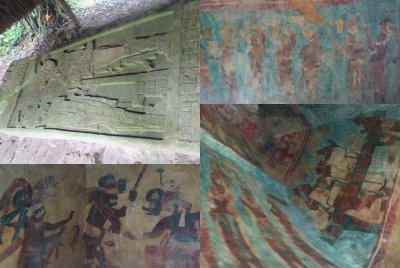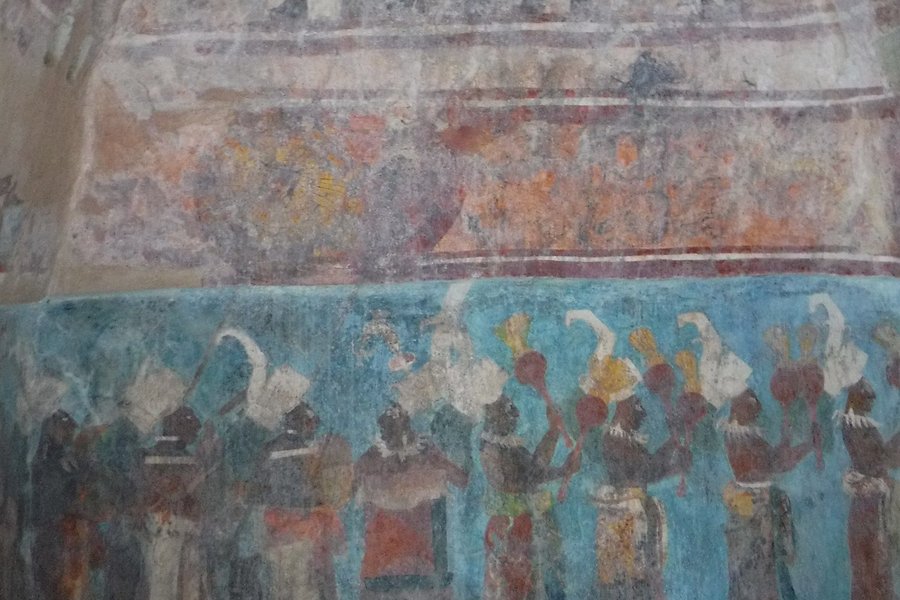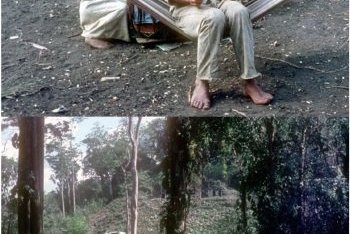Mexico
Region Lacan-Tún - Usumacinta
Region Lacan-Tún - Usumacinta is a network of natural protected areas of pristine tropical and floodplain forests hosting important biodiversity, including endangered species such as the harpy eagle and the jaguar.
Four ethnic groups now inhabit the region and two major Mayan archaeological sites, Bonampak and Yaxchilán, are located here. The former is distinguished by its stelae and colourful frescoes, while the latter is famous for its finely decorated architectural elements.
Site Info
Official Information
- Full Name
- Region Lacan-Tún - Usumacinta (ID: 1962)
- Country
- Mexico
- Status
-
On tentative list 2004
Site history
History of Region Lacan-Tún - Usumacinta
- 2004: Added to Tentative List
- Added to tentative list
- Type
- Mixed
- Criteria
Links
- UNESCO
- whc.unesco.org
- Related
-
- mayaruins.com — Maya ruins website zooms in on Bonampak's history and murals
All Links
UNESCO.org
- whc.unesco.org — whc.unesco.org
Related Resources
- mayaruins.com — Maya ruins website zooms in on Bonampak's history and murals
News Article
- Jan. 28, 2024 ny1.com — Mexico confirms some Mayan ruin sites are unreachable because of gang violence and land conflicts (Yaxchilan)
Community Information
- Community Category
- Natural landscape: Forest
- Archaeological site: Pre-Columbian
Travel Information
Recent Connections
News
- ny1.com 01/28/2024
- Mexico confirms some Mayan ruin si…
Community Reviews
Show full reviews
This site includes two of my favorite Maya ruins of Yaxchilan and Bonampak -- two very unique sites among the many Maya ruins I have visited.
Yaxchilan
You reach the site by a 45 minute boat ride down the Usumacinta River, which is the border between Mexico and Guatemala here, and kind of a fun experience by itself. Once you arrive at Yaxchilan, you enter the site proper through the small Labyrinth building. Moss-covered stones are everywhere, contributing to the jungle atmosphere of these ruins. The Great Plaza has a large number of structures, ball courts, and stelae. The stelae still have very visible hieroglyphics on them. Stele 11 is a particularly noteworthy one. It's considered one of the best examples of sculptural monuments, carved during the reign of King Bird Jaguar IV (752-772 AD), it now rests on the ground in the Great Plaza, but it survived an earlier failed attempt to move it to Mexico City. There are several door lintels that also show fantastic hieroglyphic details. There is even some pigment remaining in spots, but if that gets you excited, wait until you get to Bonampak. There is so much more than the Great Plaza -- there's a huge staircase leading to the Great Acropolis and Structure 33 with its elaborate comb top. And another Small Acropolis even further up, as well as additional buildings and trails you can explore.
You'll probably come as part of a group tour (I did). Mine did not …
Keep reading 0 comments
La Région Lacan-Tún – Usumacinta is proposed as a mixed site by Mexico. It encompasses large areas of tropical forest in eastern Chiapas, notably the flora and fauna protection area Nahá-Metzabok, the flora and fauna protection area Chankin, the natural monument Bonampak, the natural monument Yaxchilán, the biosphere reserve Montes Azules, the biosphere reserve Lacan – Tún and the communal reserve La Cojolita. The nomination file claim an OUV from the high biodiversity of the area as well as the Mayan remains. I visited Mexico in 2019 and visited two components of this site: Yaxchilán and Bonampak
Yaxchilán
One cool thing about Yaxchilán is that it can only be reached after a 45 minutes boat ride on the Río Usumacinta starting in Frontera Corozal. The site is therefore situated in the middle of the jungle in a bend of the river. The setting is great and the wildlife is abundant (birds, butterflies, howler monkeys). The city was once a powerful Mayan state. The site, even though it is not as impressive as other archaeological sites nearby (Palenque, Tikal), is interesting and posses some unique features. Among these, it is particularly fascinating to walk inside the rooms and stairways of El Laberinto (Edificio 19, the Labyrinth) and get lost among the bats, tree frogs, and whip spiders that now occupy the structure. El Edificio 33 is situated atop a long stairway and is the best preserved temple with its beautiful stone lintels and sculptures (Yaxchilán is famous for its lintels). Edificios …
Keep reading 0 comments
The recent identification on this Web site that Bonampak had once been on Mexico’s T List (1986 -2001 under the title “Zone archéologique de Bonampak et forêt circondante”) has reminded me of my visit there way back in summer 1971! This Mayan archaeological site had first been “discovered” by non-Mayans as recently as 1946. That was only 25 years before my visit - since when, another 44 years have passed to the writing of this review! It is famed for its Mayan murals – and these were already well enough known to figure in replicas on the walls of the Mexico City "Bellas Artes" underground station (but only installed there in Sept 1970) and a “room” in the city’s Anthropological museum.
But, in 1971, getting to see the real thing was another matter altogether. Nowadays there is a highway capable of taking daily bus tours from Palenque c150kms away. To the best of my knowledge this was only built relatively recently. Throughout the 1980 and 90s the states of Chiapas in Mexico and Peten in Guatemala opposite it were areas of civil war, drug and people smuggling, squatting and illegal deforestation. Many of these problems continue.
In 1971 the only practical way in was by light aircraft and this hadn’t figured in my travel plans! However, when, whilst sitting in a café in San Cristobal de las Casas, I was invited by some Germans driving around Mexico to chip in towards the cost of a flight …
Keep reading 0 comments
